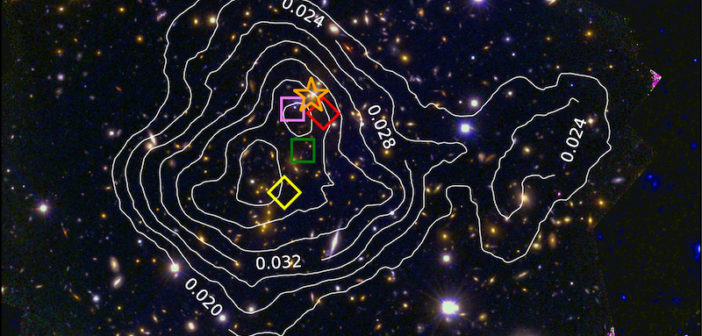You’re looking at SPT-CL J2106-5844, the most massive distant (farther than roughly 8 billion light-years) galaxy cluster known. This composite image (click for the full view) shows the field of the cluster, which spans a distance of roughly 3 million light-years across, in three Hubble color filters. The overlaid contours show the distribution of mass within the cluster, as recently determined by a team of scientists led by Jinhyub Kim (Yonsei University, Republic of Korea; University of California, Davis). Kim and collaborators used weak gravitational lensing — slight distortions in the shapes of background galaxies caused when their light is bent by the massive gravitational pull of this cluster — to map out the tremendous mass of SPT-CL J2106-5844. They find this cluster weighs in at a whopping ~1 quadrillion (1015) solar masses! Studying this distant, monster cluster can help us place constraints on how the universe’s large-scale structure formed and evolved. To read more about what the authors learned, check out the article below.
Citation
“Precise Mass Determination of SPT-CL J2106-5844, the Most Massive Cluster at z > 1,” Jinhyub Kim et al 2019 ApJ 887 76. doi:10.3847/1538-4357/ab521e


1 Comment
Pingback: From AAS NOVA: ” Featured Image: A Distant Cluster Tips the Scales” | sciencesprings